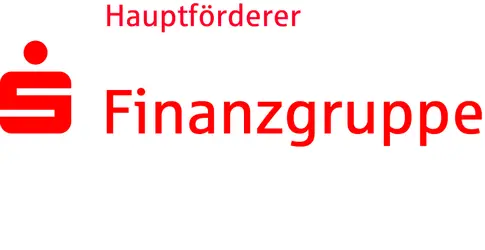Invitation to the press conference | German Design 1949–1989. Two Countries, One History
12 October 2021German Design 1949 – 1989
Two Countries, One History
From 15 October 2021, the Kunstgewerbemuseum, of the Staatliche Kunstsammlungen Dresden (SKD) will be showing the exhibition “German Design 1949–1989. Two Countries, One History” in the Kunsthalle im Lipsiusbau. Following the presentation in the Vitra Design Museum, Weil am Rhein, this is the second venue to exhibit this comprehensive overview of the history of post-war design in the two German states up to reunification.
- Exhibition Site Kunsthalle im Lipsiusbau
- Dates 15/10/2021—06/03/2022
Mehr als 30 Jahre nach dem Mauerfal
More than 30 years after the fall of the Wall, the Kunstgewerbemuseum and the Vitra Design Museum are addressing the complex issue of a history of German design that encompasses both East and West. The 390 exhibits extend from iconic furniture and lighting fittings, graphic and interior design to fashion, textiles, jewellery and vehicle design. On display are both legendary items from daily life such as the “Simson S50” (1975) by Karl Clauss Dietel or Dieter Rams’s radio-phonograph (1956) nicknamed “Snow White’s Coffin”, and new finds and rarities such as Luigi Colani’s “Poly-COR” sculptural loop chair (1968) or Renate Müller’s therapy toys. The exhibition focuses on protagonists such as Rudolf Horn, Margarete Jahny or Egon Eiermann, or on influential higher education institutions, the Werkbund design and crafts association, and the Bauhaus
legacy, illustrating the tightly woven connections between design and contemporary history, everyday culture and the global political context in the divided Germany.
Breaking with previous retrospectives’ depiction of East German design, which was rarely acknowledged to have any significance of its own, this presentation focuses on its creative quality and the search for design solutions. As such, it constructs a clear new narrative, intended to hold up East and West German design history against one another and thus pinpoint the traits and values of “German design” as a whole.
This unusual case of a double history shows the status that has been ascribed to design under different material and social conditions. The first section of the exhibition is thus about how design was used in each of the states as an instrument of political propaganda and a means of establishing their identity. Objects are also presented that reveal a connection between the two Germanies, showing that industrial transfer and the practice of linking in with modernist ideas were relevant on both sides of the Wall.
The three subsequent sections of the exhibition, “Reconstruction and New Beginnings”, “Two Visions of Society” and “Crisis, Protest and Alternatives”, follow the chronological order of the most important political events such as the establishment of the two states – the FRG and the GDR – in 1949, the construction of the Wall and the Cold War until German division came to an end in 1989. They examine fascinating design idioms from each era, inter alia covering the re-establishment of design teaching and its institutions in the 1950s, the Space Age, and the search for alternatives after the 1973 oil crisis.
Thomas A. Geisler, director of the Kunstgewerbemuseum: “The exhibition ‘German Design 1949–1989. Two Countries, One History’ compares East and West German design on equal terms and in so doing casts a spotlight on lesser-known chapters of German design history. While emphasising the political dimension of design, the exhibition also reveals a fascinating multiplicity of design styles and idioms going beyond mere contrasts between the East and West.”
Mateo Kries, director of the Vitra Design Museum: “To this day, our impression of German design between 1949 and 1989 is one of antagonism between the East and West and related clichés. This exhibition shows that reality was more complex: while there were many aspects that divided the East and the West, they also shared many connections. A project like this could only have arisen from close partnership between two museums that reflected those two perspectives on German design history and wanted to bring the two sides closer together.”
Philip Kurz, Chief Executive Officer of the Wüstenrot Foundation: “The Wüstenrot Foundation understands the multiple outlooks of cultural heritage as the essence of our society’s collective memory. It is only when the different temporal and geographical layers of the two post-war German societies are accorded equal importance that multivalent aesthetic correlations can be established, and with them the possibility of a critical engagement with the past and the future.”
In Dresden, the exhibition will be complemented by an extensive programme of supporting events in the display rooms and the city. These will include city walks and a film evening in cooperation with the ZfBK, Saxony’s centre for the built environment. A presentation by the online platform “German Design Graduates” will add contemporary modes of expression from German schools of design and art to the display in the foyer of the Kunsthalle. One format worth special mention is the panel discussions named “round tables” after the negotiation sessions held between citizens' movements and representatives of the GDR government in 1989/90. The Kunstgewerbemuseum will be inviting designers and experts from the East and the West to talk about the different paths taken by design teaching in the GDR and the FRG; about whose narrative prevails, and about how design flourishes outside official structures.
The Deutsche Werkstätten in Hellerau will be providing a special item of furniture for this special discussion format: literally a round table. Its creator Gabriel Bensch has based its design on the topic of shifts, disruptions and overlaps. In cooperation with the Pestel company, a now iconic chair design known as the Z-Stuhl will also be installed on the façade of the Lipsiusbau. Devised by Ernst Moeckl, it is representative of 1970s design history in the divided Germany, having been created in West Germany and produced in East Germany from 1973 on. The Pestel company began producing it again in 2020.
Accompanying the exhibition is the publication of the same name, “German Design 1949–1989. Two Countries, One History”, written in German and English. Published by Staatliche Kunstsammlungen Dresden (Kunstgewerbemuseum), the Vitra Design Museum and the Wüstenrot Foundation. Softcover with flaps, 320 pages, approx. 380 illustrations, € 59.90. ISBN 978-3-945852-43-9 (DE)/978-3-945852-44-6 (EN).
To comply with hygiene requirements during the coronavirus pandemic, attendees must register for the press event at presse@skd.museum. Access will only be granted to those who offer proof they have been vaccinated or tested, or recovered from Covid (“3G” in German) and give their contact details at the venue. Please note that you will be required
to wear a medical-grade nose and mouth covering (FFP2 or surgical mask) and stay at a distance of 1.50 metres from other people.
Partner & Förderer
An exhibition by Staatliche Kunstsammlungen Dresden (Kunstgewerbemuseum), the Vitra Design Museum and the Wüstenrot Foundation


Sponsored by


Partner on education programme


